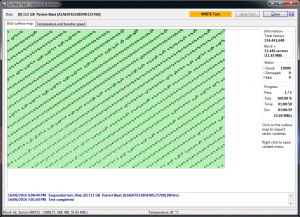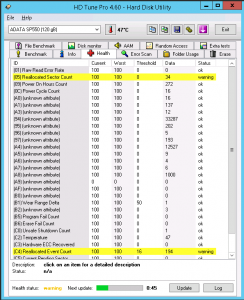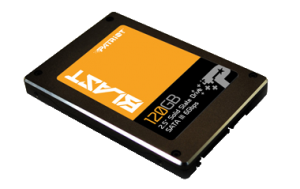Cheap Solid State Drives Are, In Fact, Cheap
As of the last year or two, SSDs stopped being expensive, enthusiast-level components. The prices fell dramatically, and new players joined the game. Companies like ADATA, Patriot, and Sillicon Power undercut the prices of all major brands like Corsair, Samsung, and Intel.
How is it possible for those budget-friendly brands to sell a $70 drive that matches the speed, IOPS, and capacity of a $150 big-brand drive?
I’ve spent money on both kinds, and it seems the answer lies in changes under the hood that the average user won’t notice.
Let’s take a look at the ADATA SX900, compared with the Patriot Blast and a cameo by the ADATA SP550.
Sustained Write Operations
The key selling points for SSDs are read/write speeds, and Input/Output Operations Per Second (IOPS). After all, aside from price and brand, you don’t have much more to compare them by.
What is surprising, then, is that a $45 SSD advertises the same read/write speeds as a $100 drive. Surely that can’t be right, otherwise no one would buy the expensive one. The trick is that, while the cheaper drive can indeed hit those high speeds, it cannot sustain them.
This applies to both read and write operations, though it is much more exaggerated with write performance.
 Notice all the dark sections – those indicate significant decreases in transfer rate.
Notice all the dark sections – those indicate significant decreases in transfer rate.
The pattern suggests something to do with the memory topology.
 The Patriot Blast 120GB advertises 560MB/s read, while the ADATA SX900 256GB advertises only 550MB/s.
The Patriot Blast 120GB advertises 560MB/s read, while the ADATA SX900 256GB advertises only 550MB/s.
Someone is being less honest.
Life Span
Flash memory has a lifespan. The typical figure thrown around is 10,000 write cycles. It all depends on the technology used, and for SSDs there are two primary competitors: MLC, and TLC. I won’t get too much into comparing the two; it has been done before. However, the main point is that TLC can only achieve 3-5k rewrites, while MLC can reach 10k.
TLC is much cheaper than MLC, and that’s the reason we see so many $50 SSDs: they all use TLC. The result is, off the bat, a technology with half the lifespan. Add in further cuts to manufacturing and material quality, and that number decreases further.
Still, for a 120GB drive, 3000 write gives you 240TB of writing over a lifespan. It sounds like a lot, and for the average consumer it is. In a server, though, it is not sufficient at all:
 After only 250 days of continuous operation, the SP550 is riddled with bad sectors and locks up when it reaches one.
After only 250 days of continuous operation, the SP550 is riddled with bad sectors and locks up when it reaches one.
For comparison, my desktop’s SX900 has over 300 days of much more abusive operation, but 0 bad sectors. Multiple reformats, benchmarks, use as a cache drive, it shows no signs of age.
Other Corners to Cut
While the two ADATA’s provide plenty of S.M.A.R.T. data to keep me happy, the Patriot Blast has almost no information to share.
 Even more amusing, the temperature is fixed statically at 30°C.
Even more amusing, the temperature is fixed statically at 30°C.
There is no way for me to see how many sectors are bad, though it shows how many read errors it encounters.
Final Thoughts
I love that $50 SSDs are here. It means that 10 second bootups are within reach for everyone. I’ve installed SSDs for my dad, my sister, and now all my clients get SSDs instead of mechanical drives. In laptops especially, the data protection it offers against drops is invaluable.
There is a caveat – you still need to do regular backups, and if you will be using it heavily, be ready to replace it frequently. 250 days in a web server feels pretty short lived, and I’m curious to see how the Patriot fares in the same server.
TL:DR; If you have the choice between TLC and MLC, MLC will give you the longer life and the better performance. If you like to live dangerously and save money, TLC can do the job as long as you’re prepared for the risks.


